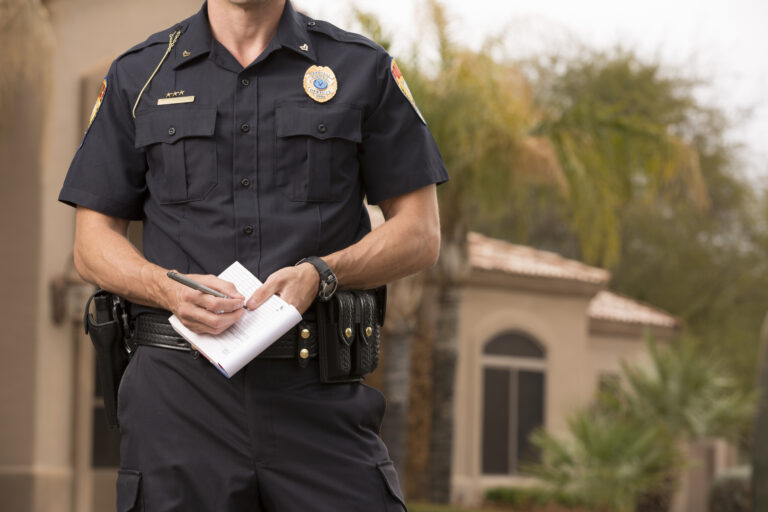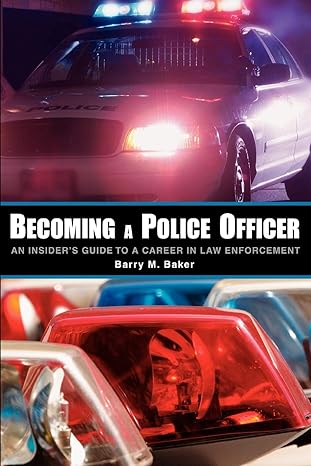
If you're working in a department where the entire reporting system is computerized, that should simplify your follow-up procedures for tracking and accountability.
~ Barry M. Baker Tweet

Detective Lieutenant Barry M. Baker (ret.) is a 32 year veteran of the Baltimore Police Department.
The police follow-up report is particularly productive when follow-up investigations are actively pursued by police officers. If you join a police department that views the integrity of its reporting system seriously, you’re going to be writing a lot of follow-up reports. In fact, just about any incident that is not concluded during the course of the preliminary investigation will require follow-up reporting. Even when an investigation is complete, pertinent information could be developed later, and that information would be documented on a follow-up report.
The Police Follow-up Report can Yield a Lot of New Information
There’s nothing difficult about completing the follow-up report. In most cases you’ll simply contact the complainant or victim in the previously reported incident to learn if that person has any additional information to report.
The way the police follow-up report will be assigned to you will depend upon different factors. If you’re working in a small police department, you may be responsible for conducting all the follow-up reporting for incidents where you’ve taken the initial report. In larger departments, you could be assigned to produce a police follow-up report for incidents initially investigated by any number of different police officers.
If you’re working in a department where the entire reporting system is computerized, that should simplify your follow-up procedures for tracking and accountability. Whether you’re writing your police follow-up report on a computer screen or on paper, just remember that follow-up reporting is important.
If your reporting system is fully computerized, you’ll be able to get your follow-up screen with all the original information, date, time, location, victim, etc. ready to go. Always check the original information, because a human being entered the information, and people do make errors. If you’re doing your follow-up on paper, the heading information will be minimal.
Narrative
After a thorough inventory of his home, Mr. Jones discovered that the following additional items were taken in the burglary:
One (1) Television; Sony; 12 inch; serial number unknown; Value: $50.00
Two (2) pillow cases; pink in color (taken from second floor rear guest bedroom) Value: $20.00
Total Additional Value: $70.00
Mr. Jones further reports that one of his neighbors had observed two men loitering in the block during the time frame of this incident.
Witness Information
I responded to the neighbor’s residence where I spoke with the following witness:
Mr. Rueben Castle, M-W-55; DOB: 12 Feb 1952782 Round View Cir Baltimore, MD 21000 Res. Phone: 785-555-3824 Bus. Phone: Same (Self Employed)
Complainant reports he observed two white males placing items into a dark colored, late model SUV which was parked in front of the victim’s residence. Mr. Castle states he earlier noticed the men when they were sitting inside the vehicle for an extended period of time. Later, he noticed the men standing beside the vehicle looking around as if they were waiting, or looking for someone. His last observation occurred when he saw the men placing two (2) bags inside the vehicle.
I asked Mr. Castle if he remembered the colors of the bags? Mr. Castle paused for a moment and then stated, “You know, they looked like they were pink.” Asked if he could describe the size and shape of the bags and the type, Mr. Castle responded, “Just bags…some kind of cloth bags.” Complainant’s description of the bags he observed is consistent with the two pink pillow cases reported taken in this report.
Mr. Castle’s observations occurred between 1200 and 1300 hrs on 8 Aug 2015.
He provided the following suspect descriptions:
Suspects' Information
Suspect #1: M-W-20 to 25; 5-10 to 6-00; thin build; 130 to 150 lbs; medium length red hair; freckles on face and arms; white tee shirt; blue jeans with holes in both knees; white tennis shoes; NFD
Suspect #2: M-W-20 to 25; 5-08 to 5-10; stocky build; 180 to 190 lbs; short dark hair; dark sun tan; large tattoo on right forearm; green tee shirt; blue jeans; dark color shoes; NFD
Vehicle: Dark colored late model SUV with Maryland registration possibly containing the letters: B and F; NFD
The above example is just an example, but the way this follow-up investigation turned out happens all the time. When you learned that two pillow cases had been taken in the burglary, you immediately knew that the burglar(s) used the pillow cases to carry property from the house. When you asked the witness the color of the bags he saw being carried by the two men, you already knew they were pink.
Every Police Follow-up Report is Important
Had another, less interested police officer, taken this follow-up report, his or her reaction to the victim’s comment about the neighbor seeing two men loitering, might have received less attention. In fact, the comment may have only inspired a mental note of, “Yea, okay.”
Remember…every, and I mean every, investigation you conduct will be important. Yes, some will be more important than others, but all are important. It just comes down to the amount of time and effort you devote to your investigations. The answers are always somewhere, and the competent police officer will always follow every lead no matter how minor it may seem at the time.


